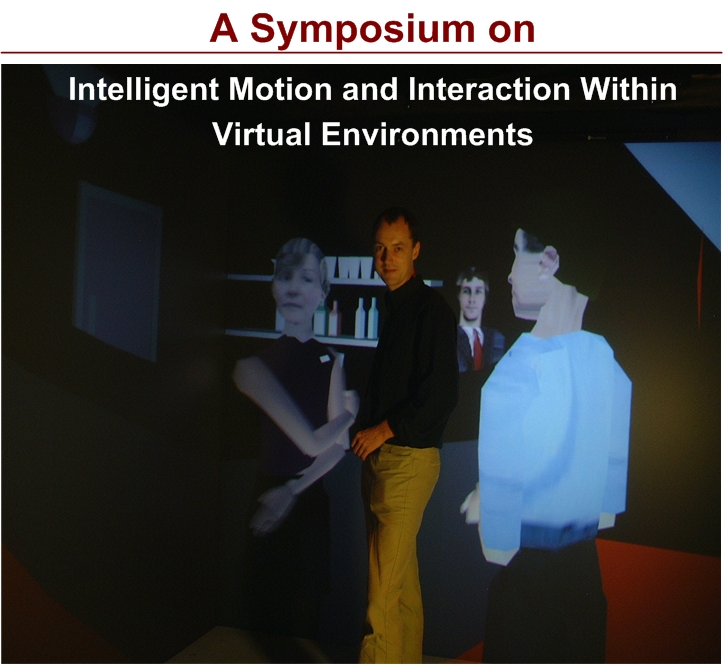

What makes virtual actors and objects experienced in virtual environments seem real? How can the illusion of their reality be supported? What sorts of training or user-interface applications benefit from realistic user-environment interactions? These are some of the central questions to be addressed by the conference. We propose to focus primarily on training and user interfaces that emphasize visual-motor interactivity, as it is within this domain that VE training systems may uniquely excel. However, several papers on the more purely intellectual interaction with avatars within a virtual environment will be presented. The organizing hypothesis of the conference is that a sense of intelligent interaction with agents arises when simpler lower level aspects of the agent, such as its kinematic and dynamic description, are simulated with high fidelity. The effect is thought to occur in the same way that intelligent behavior may seem to emerge from carefully built low level modules in a subsumption architecture, as proposed by Rodney Brooks of the MIT AI laboratory. Internationally recognized researchers have been gathered to assess the strengths and weaknesses of this organizing hypothesis.
The symposium will start with a brief introduction note by the Co-chairs (Stephen R. Ellis and Mel Slater).The Technical Programme will include keynote speakers and invited speakers, some who are speaking from the USA via a teleconference link. In addition there will be poster presentations selected from submissions.
| Poster submissions due | 05 September, 2003 |
| Poster acceptance notification | 10 September, 2003 |
| Conference Begins | 15 September, 2003 |
| Conference Ends | 17 September, 2003 |
Queries to Co-ordinator





Last updated by Vinoba Vinayagamoorthy